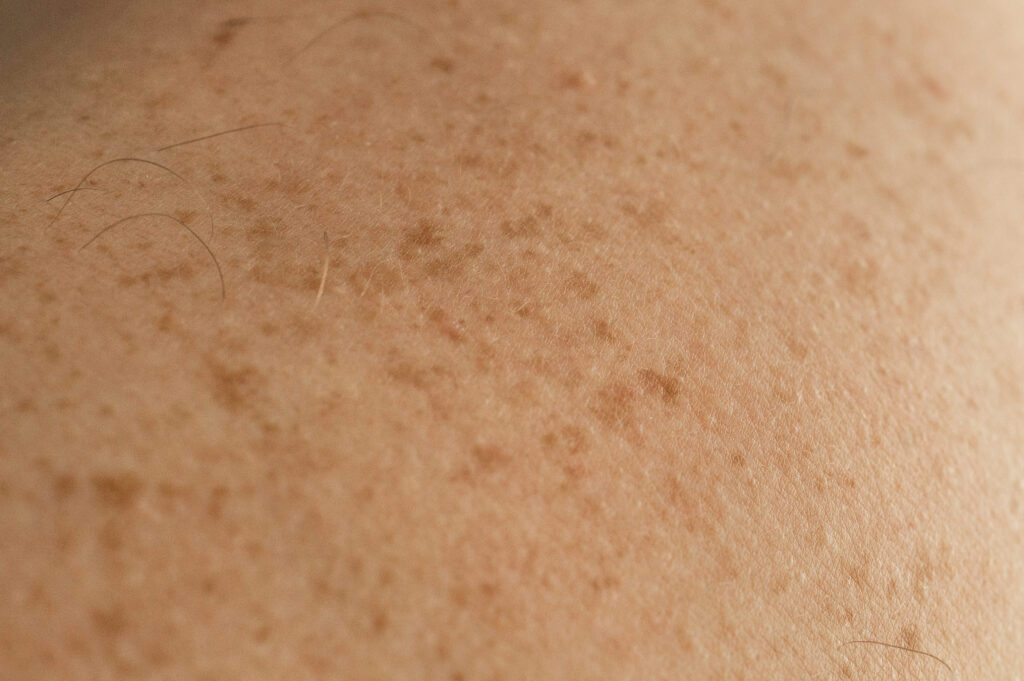

What Is Pigmentation?
Pigmentation manifests as irregular patches on the skin that appear darker than the surrounding areas. This can be attributed to various factors including sun exposure, hormonal changes, genetics, and ageing.
Get Rid Of Stubborn Dark Patches Across Your Skin




Pigmentation manifests as irregular patches on the skin that appear darker than the surrounding areas. This can be attributed to various factors including sun exposure, hormonal changes, genetics, and ageing.
There are various factors that can cause skin pigmentation. Here are the most common causes:

Melasma is a type of skin condition often characterised by brown or blue-grey spots. It is more common in women and can be related to hormonal changes.

Freckles, characterised by small, flat, brown spots on the skin, typically appear in sun-exposed areas. They are a benign form of pigmentation mainly induced by sun exposure, particularly in individuals with fair skin or a hereditary inclination.
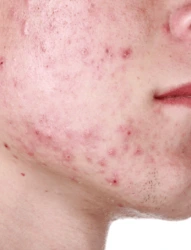
(Post-Inflammatory Erythema) Flat, brown spots on the skin, known as solar lentigines or sun spots, are associated with the ageing process and prolonged exposure to sunlight. The affected areas may display a darker hue when compared to the surrounding skin, varying from light brown to black.
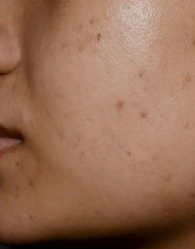
Post-Inflammatory Hyperpigmentation, often referred to as PIH, is a type of skin discoloration that arises subsequent to an inflammatory incident, such as acne, burns, or other forms of skin trauma. It is identified by the presence of darkened patches or spots on the skin.
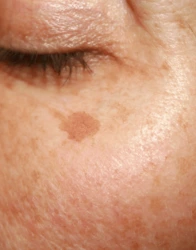
Hori’s Nevus is characterised by a unique form of pigmentation, presenting as a bluish-grey discoloration on the skin, frequently occurring symmetrically on both sides of the face. It tends to be prevalent in women and individuals with Asian heritage.
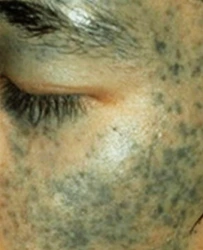
Nevus of Ota is a bluish or greyish pigmentation condition affecting both the skin and the eyes. It is characterised by an excess of melanocytes, the cells responsible for determining skin colour. It’s generally present from birth and can develop further in life.
Pigmentation can cause several issues such as insecurities and discomfort to oneself. At Glowwis, we offer a variety of pigmentation removal treatment options based on your own unique skin condition and concerns.
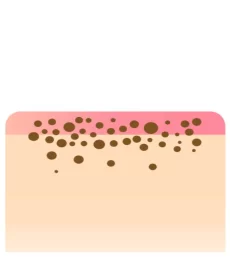



Dr. Sam will curate a treatment regime to help you achieve your best version! Book a consultation today to reveal your radiance!
Treating pigmentation often involves a combination of skincare products, lifestyle changes, and, in some cases, professional treatments. It’s important to note that results can vary, and it may take time to see improvement. Here are some approaches recommended by Dr. Sam to treat pigmentation:
If your pigmentation is related to specific triggers such as certain skincare products or hormonal changes, try to avoid or manage these triggers.
Prescription retinoids, like tretinoin, can promote cell turnover and improve the appearance of pigmented skin. They should be used under the guidance of a dermatologist.
Protecting your skin from the sun is important in preventing and managing pigmentation. Avoid direct sun exposure as much as possible, and always apply a broad-spectrum sunscreen with a high SPF to protect your skin from harmful UV rays.
If you notice persistent or worsening pigmentation, consult a qualified healthcare professional for a personalised assessment and treatment plan.
With the aim to make Glowwis the most reliable aesthetic brand in Singapore, Dr. Sam Pradeep, the Medical Director of Glowwis Aesthetic & Medical Clinic curates a wide range of effective treatments to address various concerns and issues.
Treating pigmentation can help prevent further damage to your skin caused by sun exposure and other environmental factors. Using skincare products with sun protection and following a consistent routine can contribute to long-term skin health.
To reduce the severity of pigmentation, a professional can advise you on the most suitable and the most suitable treatment and approaches that are more effective than over-the-counter-products.
If pigmentation is caused by hormonal changes, medications, or other underlying conditions, seeking professional treatment can help address the root cause and provide other effective solutions.
When performed by trained professionals, many pigmentation treatments are safe and effective. Dermatologists can guide you on suitable options for your skin type and concerns.

Every patient is important to me! The most delightful aspect of my profession is to see the satisfaction of my patients and the biggest earning in my career is the patients trust on me.
Dr. Sam has many years of experience in the aesthetic medicine and has worked with industry professionals for more than a decade.
After obtaining his Bachelor of Medicine and Bachelor of Surgery (MBBS), his experience in Anaesthesia, ICU management, Chronic pain management have laid a solid foundation in understanding & managing the pain during aesthetic procedures in a safe and effective manner.
Dr. Sam’s Passion and desire in aesthetic medicine made him to work hard in mastering skills & obtaining required certifications to become an aesthetic physician.
Learn what our customers have to say about our treatments and services.
A sunscreen with SPF 30 will protect the skin from sun damage, preventing the darkening of pigmentation on the skin.
C and E into your skincare regime
Consuming foods rich in nutrients and vitamins while maintaining hydration throughout the day contribute to healthier skin.
Alpha hydroxy acid (AHAs), beta hydroxy acid (BHA), and retinoids have the ability to promote skin regeneration and remove dead skin cells from the skin’s surface. This helps provide a gentle exfoliation to the skin.
Controlling your stress level by meditating, doing yoga, and performing breathing exercises will not only improve your overall health but also mental well-being.
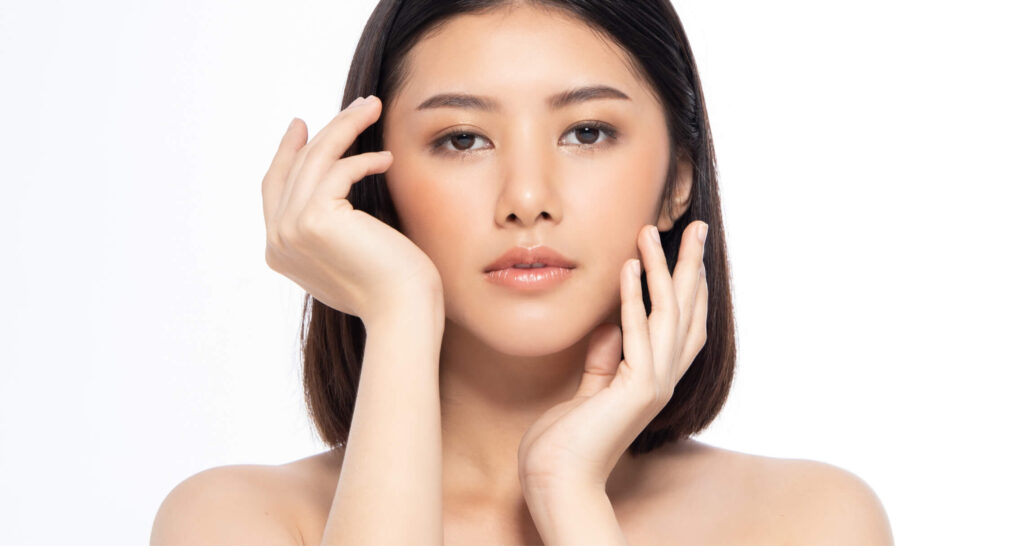
Fill up the form and we will get back to you as soon as possible.
Our area of expertise lies in non-invasive or minimally invasive aesthetic procedures that cater to both men and women, designed to enhance the confidence of every patient through an affordable selection of services.
Each treatment caters to different skin types, concerns, and goals. Our doctor will conduct a comprehensive skin analysis for each of our patients to determine the most suitable treatment that matches their needs and goals best.
There will be minimal to no pain. Those with higher sensitivity may experience a slight prickling sensation. However, it is tolerable. To minimise any discomfort, our specialists will apply numbing cream before the procedure.
While we encourage you to practise a good skincare regimen, it’s crucial to note that skin pigmentation issues occur in the deeper layers of the skin and require professional assessment and care in order to address them.
Every treatment focuses on a distinct set of issues and goals. Our doctor will conduct a comprehensive skin analysis for each of our patients to decide the most suitable treatment.